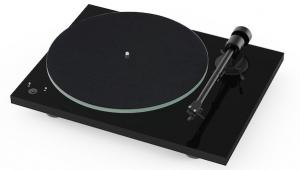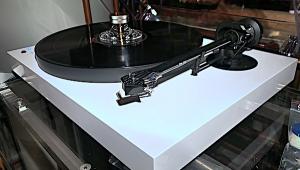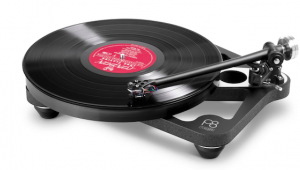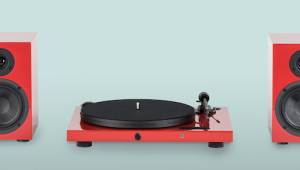Al establecer un sistema transparente y objetivo para el calculo de las horas trabajadas y los beneficios obtenidos, se eliminan las posibles discrepancias o favoritismos que podrian surgir en la asignacion de dias libres, horas extras u otros incentivos. Esto es especialmente importante en empresas grandes o con estructuras jerarquicas complejas, donde puede haber diferencias en los contratos o acuerdos laborales entre empleados for calculadora de horas de trabajo con almuerzo . Con una calculadora de horas de beneficios, se garantiza que todos los trabajadores reciben el trato justo que les corresponde segun las políticas establecidas.
Continuum Audio Labs Caliburn turntable & Cobra tonearm Page 4
For instance, though Bob Simpson is and was a great engineer at RCA, I'd never thought that Mingus Plays Piano, his recording of jazz bassist Charles Mingus at the keyboard (Impulse! A-60), was anything special. But it is. On the Caliburn the lower keys sounded velvet-deep and woody, yet not soft, soggy, or in any way boxy. The upper range sounded faster and more bell-like than I remembered ever hearing it, but fully fleshed out and harmonically complete instead of tinkly. And compared to my expectations, the spatial presentation was nothing short of startling. The piano had nothing to do with the speakers, nothing to do with grooves in a disc—it seemed to physically float, fully formed, between the speakers with an insistence that these clichés I've used for decades simply can't convey. There was just so much more there there.
This record, which I'd thought sounded lackluster at best, was now stellar, communicating Mingus's musical gestures as never before. I've been playing this album for decades, and had played it using my reference Simon Yorke—no slouch—just weeks before. Good, but not this. Every record I knew had been good, but not this.
Another formerly blah piano record, one that I'd thought sounded kind of boxy, was Bill Evans at Town Hall Volume 1 (Verve V6-8683). Turns out it's actually a vivid piano recording, well focused and harmonically complex, though the piano is presented almost comically out of proportion and larger than life.
The Caliburn-Cobra excelled at every aspect of vinyl reproduction. As its noise floor dropped lower than I had ever imagined possible, it dug new low-level information out of most records I played. I was constantly being surprised by musical information buried in the mix that I'd never before heard. (I thought I'd written that cliché for the last time some years ago.) I wasn't trying to hear things—they just appeared. Yet there was no sense of hyperreality or enhanced image edge or tipped-up top end. And with the elimination of "overhang," the Caliburn's rhythmic abilities, too, were second to none.
The Caliburn's bass performance was also singular: it produced bottom-end extension, weight, control, texture, dynamic authority, and—especially—agility better than any other 'table I'd ever heard. It rocked!
The Caliburn-Cobra-Castellon performed better than any turntable I have ever heard, and by a gaping margin. That's all there is to it. When you hear the music it lets escape from the grooves, you, too, will be astounded and swept off your feet. Count on it.
Continuum Cobra vs Graham Phantom B44
In order to let me evaluate the Caliburn independent of the Cobra, Continuum made an adapter plate that allowed Graham Engineering's Phantom B44 tonearm to be mounted opposite the Cobra. Continuum has the utmost respect for Bob Graham and his arm, considering it among the best out there.
Direct comparisons using the same cartridge told me that these are two of the finest tonearms I have ever heard. The Graham was slightly more reserved and grounded, the Cobra a bit more airy and effusive.
Wally Malewicz's skate-blade–like device for setting VTA is mandatory with the Cobra, as it's impossible to reference parallel to the platter play without it. I set the VTA by eye when I first installed the Lyra Titan cartridge, and I had the back of the arm way too high. No wonder my first impression was that the Cobra was a bit bright and emphasized the top end! But once I'd established true parallel and dropped the pivot a bit, the Cobra's balance became essentially neutral and the brightness disappeared. The Caliburn took the Graham to new performance heights—especially in terms of dynamics and bass extension compared to the Yorke S7 arm.
Quibbles
About a month after the installation, the Castellon's top shelf ended up resting against the frame, resulting in zero isolation. The cause was a slight miscalculation in the amount of added mass (via metal plates placed under the platform) needed to ideally position the two magnetic assemblies and the collapse of some foam sheets in between.
Still, there were a few unfinished details that someone spending $90,000 would want taken care of. For instance, where the thin tonearm wire enters the shielded section terminated with RCA plugs, a layer of frayed natural fiber was left exposed. It should be neatly trimmed or encased in resin or shrink tubing.
Another bit of unfinished business was how the arm wires sat loosely within a channel drilled through the armtube. I can't imagine that microvibrations from these wires won't in some way negatively impact performance. Perhaps the wires should be somehow damped within the tube—or would such damping interfere with the arm's natural damping?
Some visitors to my listening room complained about the grooved platter edge, which had a few minor casting imperfections in the form of tiny dimples. Casting this material is extremely difficult, and these imperfections seemed to have no effect on performance and were cosmetically minor—as were some small ripples, noticeable only from certain angles, in the Caliburn's nickel-plated façade. No one complained about the sound, that's for sure.
The most serious quibble I have with the Caliburn is about its platter's hard surface. If there's dust on it, or on the side of the LP contacting it, the vacuum holddown will embed the dust in the groove, causing a frying-egg noise that's difficult if not impossible to remove. SOTA was able to cure this well-known phenomenon with a cloth mat; Rockport used a platter surface with sufficient give to prevent embedding.
Mark Doehmann told me that he was aware of the problem but felt that the hard surface provided the most effective vinyl/platter coupling and the best sound, so the purist in him won out. One solution is to carefully clean the platter surface before each play, using a microfiber cloth designed to pick up dust. Another is to use an optional thin mat, supplied by Continuum. I did the latter, and while the mat occasionally attached itself to the record's underside and had to be peeled away, I didn't regard it as inconvenient or inelegant.
Conclusions
The only serious competition for Continuum Audio Labs' Caliburn-Cobra-Castellon combo is the Rockport System III Sirius. While the Rockport, too, is a stellar performer, it's somewhat analytical, and lacks the Continuum's bottom-end foundation and emotional majesty. However, the Caliburn can't match the Rockport's design elegance or perfect fit'n'finish—at least, not yet. This is not surprising; the Rockport has been refined over more than a dozen years now, while the Caliburn is brand new.
Still, it's a mighty impressive debut in every way. With an established American importer and a domestic service team in place, Continuum is making an effort to instill buyer confidence for those willing and able to cough up $89,999. Given the funds, I'd buy the Caliburn over the Rockport without hesitation. It sings to my heart.
As with loudspeakers that virtually eliminate cabinet resonances, when you hear a turntable that has been scientifically designed to eliminate resonances—and not by damping the life out of musical expression—a world of previously hidden harmonic, dynamic, and spatial information comes flooding forth. The single most impressive performance attribute of the Caliburn-Cobra-Castellon system was its correctness of rhythmic and harmonic structure with every instrument—from those that produce deep bass to the lightest, feathery flutes, and especially the piano. You have to hear piano reproduced by this turntable. Then you will appreciate its true greatness—though string tone, too, will keep you glued to your seat.
There are clowns on eBay selling CD-Rs of Beatle albums made from vinyl. Why EMI and Apple Records don't shut them down, I don't know. A reader sent me one, and while it was better than the commercial CDs, it was still awful. If I could make CD-Rs of my collection of original Parlophone Beatles pressings with the Caliburn and the Boulder 2008 phono preamp, which I was able to get back for part of the review period (the Caliburn sounded equally impressive but somewhat different via my reference Manley Steelhead), I'm convinced they would rival or surpass anything EMI themselves might come up with in the future from their 35- and 40-year-old master tapes.
I'll let my audio-cynical wife have the last word. She gives everything that comes through my listening room a quick audition, and is not easily impressed. (Though she did insist, after a short demo, that I buy the Wilson Audio Specialties MAXX2 loudspeakers. Good wifey!) I sat her down the other night to listen to Bonnie Raitt's cover of Bonnie Hayes' "Have a Heart," from the DCC Compact Classics version of Raitt's Nick of Time (LPZ-2025). She made some noises that I'll leave to your imagination. Her final request was to hear "Station Man," from Fleetwood Mac's Kiln House (UK Reprise RSLP9004). When the track ended, she looked at me and exclaimed, "My God, this is better than sex!"
I don't know where that leaves me.
- Log in or register to post comments


Your article has detailed the Cobra system with its sophisticated design and excellent sound tracking, along with the Caliburn turntable for easy, accurate basket random listening. The product promises to bring great sound without complicated maintenance.




















































